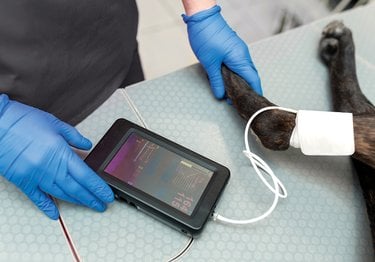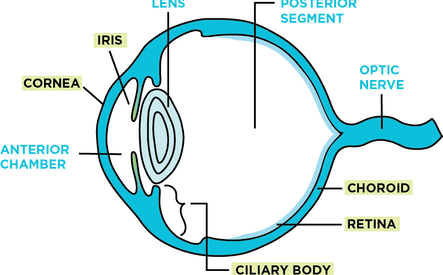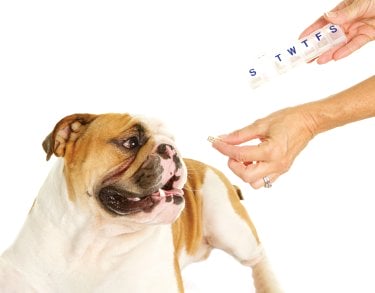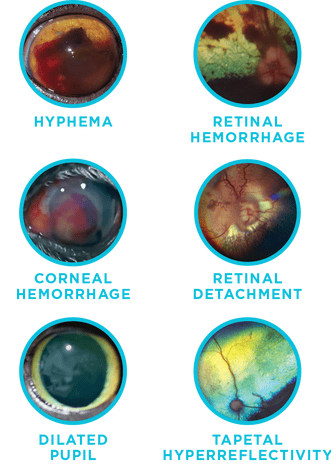Virtual Library | Hypertension and the Eye
You or someone you know may have hypertension, also known as high blood pressure. But did you know that dogs and cats can be diagnosed with this condition too? Systemic hypertension primarily affects the vascular tissue within the eye, including the iris, ciliary body, choroid and retina. Hypertension can also affect the cornea (intrastromal hemorrhage) when blood vessels have grown into the cornea for other reasons. Read on to learn more about underlying conditions, symptoms and treatment options for hypertension.
← Flip through our digital brochure
So, You Brought Home a Bulldog
Cataracts and Cataract Surgery
Entropion Causes and Treatment
Feline Herpesvirus and Treatment
OFA Certification Registry Exams
Visit our blog, In Focus, to learn more about the pets we see, the treatments we offer and the services we provide to help your pet “see a better life.”
 Systemic hypertension, or high blood pressure, can occur in both dogs and cats. It happens when there is persistent elevation in one or all blood pressure parameters (systolic/diastolic/ mean), affecting how much the heart has to work to move blood throughout the body.
Systemic hypertension, or high blood pressure, can occur in both dogs and cats. It happens when there is persistent elevation in one or all blood pressure parameters (systolic/diastolic/ mean), affecting how much the heart has to work to move blood throughout the body. Systemic hypertension primarily affects the vascular tissue within the eye, including the iris, ciliary body, choroid and retina. Hypertension can also affect the cornea (intrastromal hemorrhage) when blood vessels have grown into the cornea for other reasons.
Systemic hypertension primarily affects the vascular tissue within the eye, including the iris, ciliary body, choroid and retina. Hypertension can also affect the cornea (intrastromal hemorrhage) when blood vessels have grown into the cornea for other reasons. Treating high blood pressure requires your pet to start oral antihypertensive medications to help bring their blood pressure within the normal range. Often, these medications will be taken life-long. They are needed to help prevent damage to target organs, such as the eyes, kidneys, brain, and heart.
Treating high blood pressure requires your pet to start oral antihypertensive medications to help bring their blood pressure within the normal range. Often, these medications will be taken life-long. They are needed to help prevent damage to target organs, such as the eyes, kidneys, brain, and heart. The clinical signs of hypertension can be variable, and depend on the specific component of the eye that is affected. Hypertension commonly causes hemorrhage within the eye. This is more obvious if it occurs in the front of the eye (hyphema), but it can also occur in the back of the eye (vitreous or retina). Sometimes the only outward evidence of hypertension is the presence of dilated pupils and/or decline in vision. Retinal detachments are a result of leaky blood vessels causing fluid or hemorrhage to build up under the retina.
The clinical signs of hypertension can be variable, and depend on the specific component of the eye that is affected. Hypertension commonly causes hemorrhage within the eye. This is more obvious if it occurs in the front of the eye (hyphema), but it can also occur in the back of the eye (vitreous or retina). Sometimes the only outward evidence of hypertension is the presence of dilated pupils and/or decline in vision. Retinal detachments are a result of leaky blood vessels causing fluid or hemorrhage to build up under the retina.